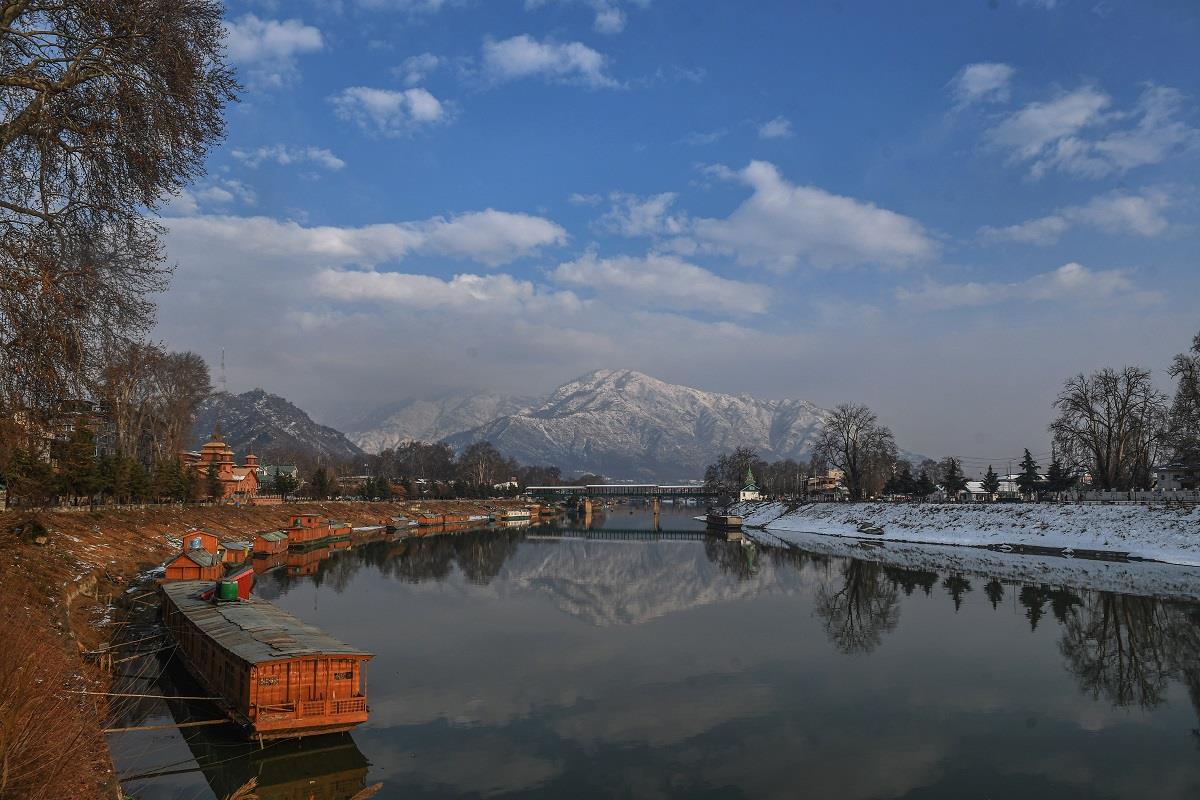
Glacier Melt: A Water Crisis Brewing In Kashmir
Kashmir is witnessing a stark transformation. The glaciers that fed its rivers for centuries are retreating at alarming rates, directly impacting water availability across the region.
ADVERTISEMENTRecent research reveals that the Kolahoi glacier, the largest in the Kashmir Valley, has lost approximately 23% of its mass over the past few decades due to rising temperatures. Jammu Kashmir, and Ladakh, home to nearly 18,000 glaciers, are witnessing accelerated melting.
This glacial melt is directly contributing to declining water levels in major rivers like the Jhelum. Jhelum river is witnessing one of its all-time lowest water levels this season, causing the shortage of drinking and irrigation water.
Read Also Climate Change Threatens Agriculture Climate Crisis: Jhelum Water Level At Alarming LowMeasurements at key points indicate a severe drop in water flow, unprecedented for this time of year. The Lidder Nallah and Rambiara Nallah are also facing critical lows, further exacerbating the water scarcity issue.
A top official of the Irrigation and Flood Control department said,“The River Jhelum is witnessing below zero flow. Main source of Jhelum are glaciers but unfortunately these are losing sheen due to Kashmir witnessing prolonged dry spells.”
Dr. Mukhtar Ahmad, Director MeT, warned that water scarcity will likely become a frequent occurrence in the coming years, impacting various sectors.
He highlighted a significant precipitation deficit and a dramatic acceleration in glacier retreat, four times faster than previously observed, and said that while some recent precipitation occurred, it was insufficient to offset the ongoing water crisis.
Regarding the immediate weather forecast, Dr. Ahmad predicted wet conditions until January 22nd, followed by a dry spell from January 23rd to 29th. He anticipated light precipitation after January 29th, but emphasized that the overall weather pattern would remain relatively unchanged, with occasional light rain, snow, and dry spells, but no major weather events.
According to Dr. Pervez Ahmed, HOD, Geography and Disaster Management, University of Kashmir, the changing climatic patterns over a longer period of time have contributed to the water shortages in the Kashmir valley.“Rising temperatures and declining precipitation, particularly crucial winter snowfall, are disrupting the delicate balance of the region's climate. This disruption is directly impacting the health of glaciers, vital reservoirs of water. Glaciers are shrinking in size and mass, exhibiting a 'retreating' trend that signals a decline in their overall health,” Dr. Pervez said.
“The process of firnification, where snow transforms into glacial ice, is hindered by reduced snowfall during critical winter periods. Consequently, snowfields, crucial for glacier replenishment, are not adequately sustained. This decline in glacier mass and snowpack directly translates to reduced water availability, evident in the decreasing discharge of rivers and streams across the region.”
Alarming Trends In Precipitation
Rainfall data underscores the gravity of the situation. Kashmir experienced its driest year in 2024, marking the most severe dry spell in five decades, with rainfall levels plunged to just 870.9 mm against the normal annual average of 1232.3 mm – a significant deficit of 29%. According to independent weatherman, Faizan Arif, this marks the fifth consecutive year of below-normal precipitation in the region raising serious concerns about water scarcity and its impact on agriculture, hydropower, and the overall environment.
In 2023, Kashmir recorded 1,146.6 mm of rainfall, a 7% deficit. The preceding years saw even greater deficits: 1,040.4 mm in 2022 (16%), 892.5 mm in 2021 (28%), and 982.2 mm in 2020 (20%).
“Winter precipitation has consistently fallen below normal over the past decade, while spring heatwaves have intensified. These factors have accelerated glacier melting, threatening Kashmir's hydrological systems and freshwater reserves. Without intervention, the region's delicate water ecosystem may face irreversible damage.”
Follow this link to join our WhatsApp group : Join Now
| Be Part of Quality Journalism |
| Quality journalism takes a lot of time, money and hard work to produce and despite all the hardships we still do it. Our reporters and editors are working overtime in Kashmir and beyond to cover what you care about, break big stories, and expose injustices that can change lives. Today more people are reading Kashmir Observer than ever, but only a handful are paying while advertising revenues are falling fast. |
| ACT NOW |
| MONTHLY | Rs 100 | |
| YEARLY | Rs 1000 | |
| LIFETIME | Rs 10000 | |
CLICK FOR DETAILS

Legal Disclaimer:
MENAFN provides the information “as is” without warranty of any kind. We do not accept any responsibility or liability for the accuracy, content, images, videos, licenses, completeness, legality, or reliability of the information contained in this article. If you have any complaints or copyright issues related to this article, kindly contact the provider above.






















Comments
No comment